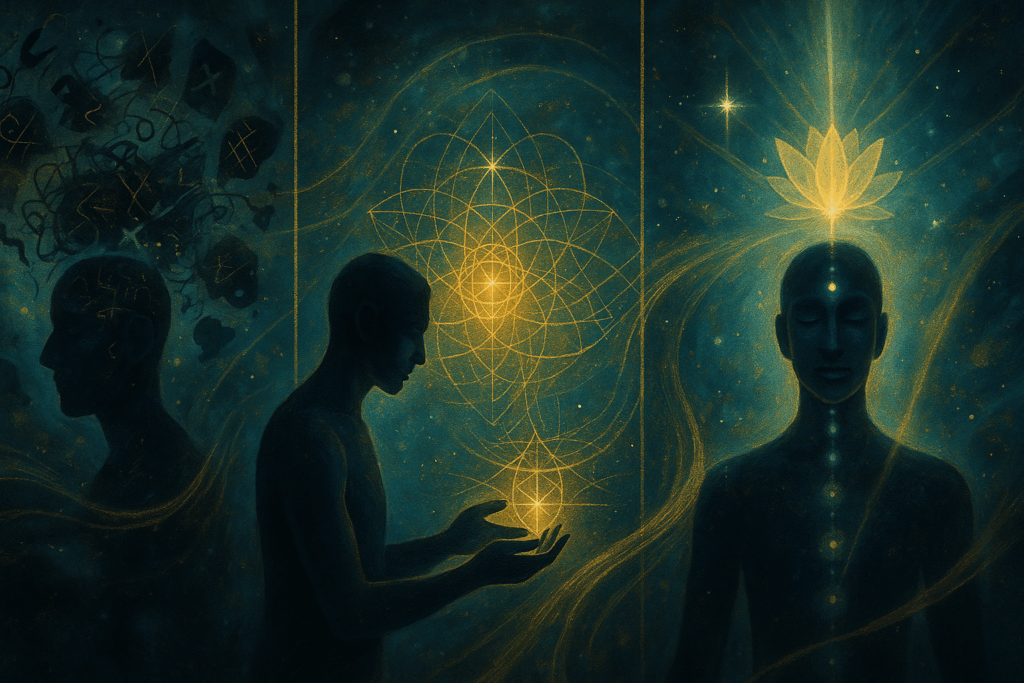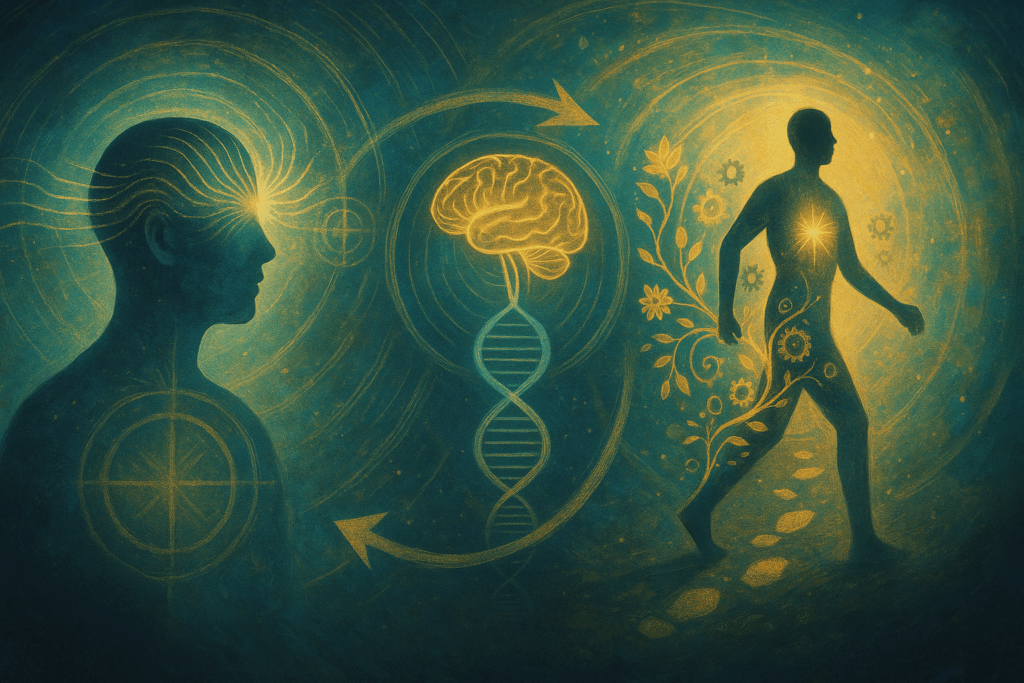“The eye sees only what the mind is prepared to comprehend.” —Robertson Davies
The science of how expectation reshapes perception and physiology
My mother is one of the most strong-willed or most stubborn people I know. She never took an aspirin or bought into drugs prescribed by conventional Western medicine, always favouring Eastern herbal traditions. She rarely got sick, and on the few occasions that she did, she would recover quickly. There was an underlying belief that just by thoughts alone, she could get better. This is not about whether or not Western or Eastern medicines are better, but rather, an investigation into how perception shapes our reality.
In rigorous placebo research, context and expectation consistently change outcomes in the body, not just our opinions about them. A major neuroscience review by Wager and Atlas (2015, Nature Reviews Neuroscience) shows that belief and context recruit the brain’s own chemistry (opioids and dopamine) to change what the body feels. Essentially, belief alone can up-regulate or down-regulate the body’s nervous system.
Open-label trials go further: as shown in a randomized IBS study, even when participants were told they’re receiving placebos, many still improve relative to no treatment. This highlights how ritual and caring relationships create a meaningful healing context that are just as important as the medicine itself.
Vision science says that the brain is a predictive organ. Your prior beliefs shape what sensory data you notice and how you interpret ambiguity. Your expectations affect perception from the top down; you literally see more of what we’re prepared to see.
20 years ago, I was bartending in England on a summer work exchange. I was serving drinks in supposedly one of the most haunted pubs. Over a century before, it served as a gallows where the rightfully accused and wrongfully sentenced were hanged by the crossbeams. The town legend was that there was a man with a top hat who frequented the bar every night and spent his time in the men’s urinals which was where most of the hanging took place.
When I was 10, I found myself with a group of kids using a ouija board to summon deceased spirits in a dark closet after school. One of the girl’s shrieked and fell to the ground spasming, in what seemed to be a live possession I saw on TV. My priors had given me a predisposition to believing in the scary stories that were being told to me by my bar regulars.
When I had my first live ghost interactions, I was floored. Why could I see them, and others couldn’t? Was I making it up? Was it because of my prior beliefs that primed me to see?
Bottom line: your mind-body system is a meaning engine. As the Taoist saying goes, ‘where your attention goes, your energy flows.’ My priors latched onto fear of the unknown and opened a side door into fearing the paranormal. Memory matched old patterns, the salience network of the brain flagged “this matters,” dopamine stamped it, and my holding onto those stories steered how I reacted in those moments, which involved a lot of screaming, and physical body contractions. Needless to say, I quit bartending, and went travelling to Scotland…where the ghosts followed me because I had not yet learned to shift my awareness.
Consciousness organizes life
Yoga describes consciousness as prana or subtle life-force organized through the chakras which are fields of information that shape how energy flows through the mind and body. The beliefs you hold are merely patterns that either contract or expand the chakra field; shift the pattern and the energy reorganizes. Neuroscience calls it updating priors; yoga calls it clearing the channel. Different maps, same terrain.
In 1:1 work, my role is to sniff out the hidden stories—the outdated operating system that keeps a client looping in self-sabotage and less than optimal behaviors. Regardless of what symptoms may be presenting in life, which could be an autoimmune disease, a toxic relationship, or feeling stuck and unable to move forward, the most common core narrative I come across is the “I’m not enough” story. That could be someone not feeling smart enough, beautiful enough, successful enough, loveable enough, etc. From an energetic perspective, this story of self-worth is a sacral chakra wound: the inability to receive love and support without self-punishment. When the sacral energy is in a deficit, life feels like pushing a boulder uphill; when it’s in excess, you might be over performing or even engage in promiscuous or people-pleasing behaviors. Your beliefs color your emotional landscape, which then mirrors through your energy system and the life you live.
From Static to Insight: Vikalpa, Kalpana & Pratibha
The yogis who really are the OG shamans of the East say the mind isn’t just “thinking,” but that it generates images, labels, and insights that either cloud or clarify the field of consciousness (citta). Yogic science precisely lays out how the mind “believes” before it sees—and how that belief can be noise or actual wisdom through three modes on the path towards awakening: vikalpa (random uncontrolled thoughts), kalpana (intentional imagination) and pratibha (divine vision).
Vikalpa — the involuntary, often random mental spin cycle. These are the daydreams, doubts, and word-based stories that arise without conscious effort—mental “static” that feels compelling but is frequently empty of the thing itself. Through meditation, vikalpa is what you learn to recognize and slowly quiet, so energy stops leaking through distraction.
- Kalpana — the intentional, creative formation of an image or idea. This is imagination on purpose: the deliberate capacity to conceive, design, and hold a mental construct that you then live into through breath, word, and action.
Pratibha — a spontaneous, intuitive flash of insight. When the mind settles and the channels clear, knowing can appear as a direct, body-felt recognition that comes from an illuminated state of higher consciousness. Pratibha is the “ah-ha” that cuts through the noise of vikalpa.
On the yogic path, these three serve a clear purpose: discernment. You learn to spot vikalpa (don’t feed the mental static), then enlist kalpana (intentional visualization that rewrites the inner narrative). Then with the clarity created, you are gifted with pratibha (a flash of Grace and direct knowing, a reconnection with Source consciousness). As this matures, your energy flows, the chakras rebalance, and your thoughts, words and actions align with what the Truth of who you are rather than with old conditioned patterns.

Practice: shift belief, shift biology, shift behavior
The body records the stories you tell it in the form of stuck energy that needs to be discharged. Here is a simple four-step somatic inquiry scan you can do on a daily basis to connect mind and body.
-
Notice the vikalpa (the old story).
Close your eyes and bring your awareness to the body as if you’re looking at it through an x-ray lens. Notice any areas of tension, numbness, or discomfort —throat, chest, gut, pelvis, etc. When you zoom into the sensations that you feel in the region, dig deep, and give a name to the story loop that is creating this tension (e.g., “I fear I won’t have enough,” “I do not believe I am not loveable enough,” “Nothing ever works out in my favor,” etc). -
Engage kalpana (skillful imagination).
Once you’ve clarified what the tension and the story, practice intentionally asking yourself, “what would happen if I let go of that story/sensation/charge?” Then imagine what your body would feel like moving through life in that state. What new opportunities would unfold for you in this lighter state? -
Invite pratibha (clear seeing).
Place one hand on your belly, and the other on your heart center, and ask: “What is more true than this old story?” You can ask a Spirit Guide if you work with them, your higher self, the Universe, or anything that is congruent with your belief system. Allow the answer to land as a fully body “yes”. Then memorize that sensation with several deep breaths. You are now re-patterning the inner permission slips that once held you hostage. -
Seal with sankalpa (heart-aligned vow) + a micro-proof.
Speak a present-tense vow that arises from the deeper truth (“I receive this support with ease and grace.” “I move with calm certainty.”). Then take one tiny action today that proves it. Send the difficult message, ask for help, set the boundary, price fairly, or whatever it is. Behavior teaches the nervous system, “this matters,” and more importantly, you are training your body to respond with clear actions to the messages of your Higher Self.
Use this mind + body practice to find the places you over-depend on “evidence” and lose out on the magic of making the seemingly impossible possible. Let your body’s response guide you (satisfying and relaxed = green light; tense and agitated = red flag).
Update the inner story and your signal changes. This isn’t wishful thinking; it’s how brains in bodies learn—and how subtle energy reorganizes through intention + practice.
If an old script has dimmed your capacity to receive, consider this your invitation to rewrite said stories with courageous breath and intentional ritual. Once your belief shifts, your world starts to look different… because you are different.
Belief sets the lens; the lens shapes what you see.

